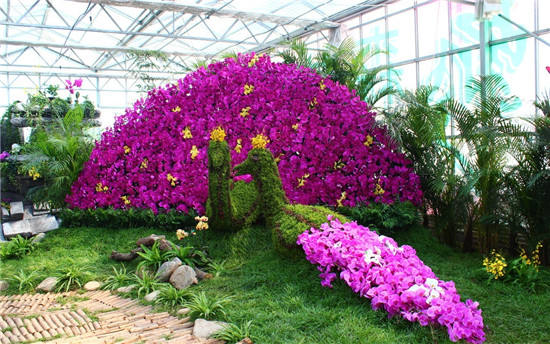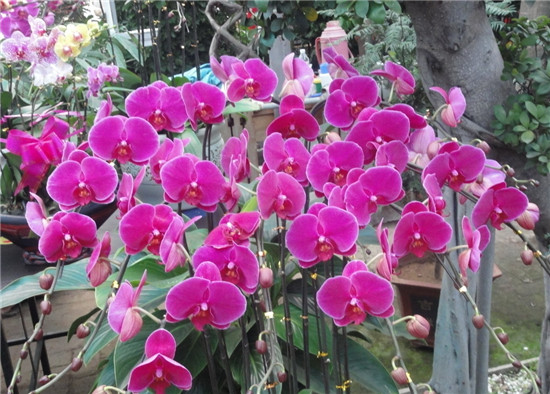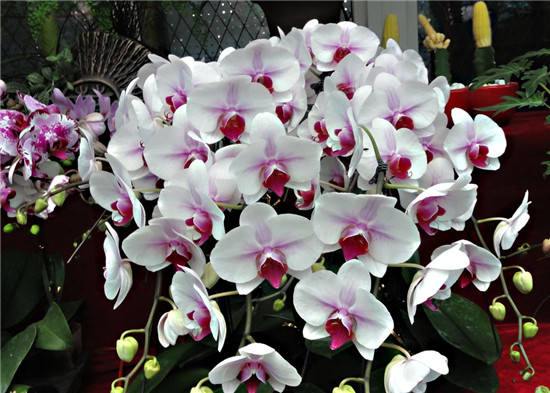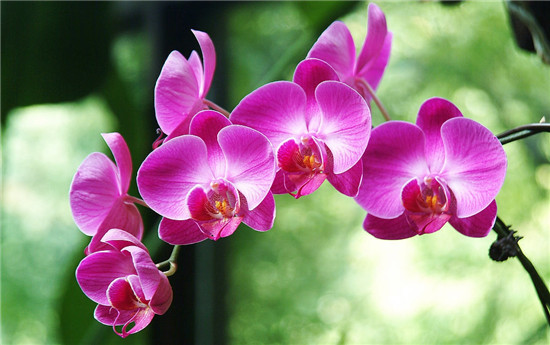Culture methods of Phalaenopsis matters needing attention in Phalaenopsis Culture
Phalaenopsis is a kind of plant suitable for indoor culture. Flowers are the most valuable part of Phalaenopsis. Beginners need to find out the living habits of Phalaenopsis before raising Phalaenopsis. Next, let's take a look at Phalaenopsis's culture method.

Phalaenopsis likes the environment of high temperature, high humidity, ventilation and ventilation, is not resistant to waterlogging, semi-shade environment, avoid direct sunlight, avoid stagnant water, fear cold, the suitable temperature for growth is 22-28 ℃, and the overwintering temperature is not lower than 15 ℃. Phalaenopsis is a tropical plant, and the cultivation temperature should be maintained between 15-34 ℃. The required temperature is also different in different growth stages.
The growth stage is 26-27 ℃ and the flowering stage is 19-21 ℃. In order to obtain more pedicels, the temperature can be maintained at 18-20 ℃ for a total of 4-8 weeks. When the light is insufficient or the daily temperature is too high, it should be maintained at 18 ℃ to strengthen flower induction (induction of flower buds). Because the flowering period should also maintain the growth of leaves, the period of low temperature should not be too long. In the case of insufficient light, if the temperature is more than 23 ℃ for more than 24 hours, it will lead to too much vegetative growth and the loss of buds.

Soilless cultivation of Phalaenopsis
First, the preparation of nutrient solution. Dilute the soilless culture nutrient solution sold on the market according to the prescribed proportion.
Second, take off the basin. Push the root system to the soil with your fingers from the hole at the bottom of the basin.
Third, wash the roots. Soak the roots with soil in water close to the ambient temperature to wash the soil from the roots.
Fourth, soaking liquid. Soak the washed root in a mixed nutrient solution for 10 minutes to fully absorb nutrients.
Fifth, filling basin and filling liquid. Wash the flowerpot, place tiles in the bottom hole, then put a little perlite and vermiculite in the pot, then put the plant into the basin and fill the root system with perlite, vermiculite and other cultivation substrates.

Gently shake the flowerpot so that the substrate is in full contact with the root system. Immediately irrigate the prepared nutrient solution until there is an outflow from the bottom hole of the basin. If you do not use the matrix, you can also mix the nutrient solution with water and cultivate it directly in the water, which is often called hydroponic culture.
Sixth, strengthen the root system. Put quartz stone, axe split stone and other pieces on the root system to strengthen the root system, avoid lodging, and spray some water on the leaves at the same time.
Seventh, daily management. The requirements for light, temperature and other conditions of soilless cultivation of flower bonsai are not much different from those of soilless cultivation. During the plant growth period, the nutrient solution should be irrigated once a week, and the amount of nutrient solution should be irrigated according to the plant size, and the amount of flowers with slow leaf growth should be reduced, and once from half a month to January in winter or dormant period.
Matters needing attention in family culture of Phalaenopsis
1. In order to avoid the phenomenon of rotten roots of Phalaenopsis, proper watering must be done. Don't pour too much water. It is best to check whether the cultivation medium is dry before watering. It won't cause rotten roots.

two。 Temperature will affect the flowering of Phalaenopsis. Phalaenopsis blossoms mostly in early spring. Many people like to put Phalaenopsis in the living room. The temperature at night is relatively low and can not be controlled well. Compared with the professional orchid culture room, the temperature and humidity in the living room are not very perfect, which will indirectly affect the growth of orchids. So not blooming is sometimes caused by the same reason.
3. Family breeding of Phalaenopsis should especially control the amount of fertilizer to avoid excessive fertilization. Orchid plants were fertilized with a small amount of fertilizer for many times.
4. Be sure to choose breathable porous pots for planting, and some people respond that it is not better to plant in large pots. That's wrong. Because the orchid chooses aquatic plants as the base, if the aquatic plants are not dry, it will lead to poor growth of orchid plants.
The above is my summary of Phalaenopsis culture methods, Phalaenopsis breeding points for attention of all the contents, I hope this article can help you. Please continue to follow us.
Related
- Wuhan Hospital Iron Tree Blooming Result Was Instantly Frightened by the Gardener Master
- Which variety of camellia is the most fragrant and best? Which one do you like best?
- What is the small blue coat, the breeding methods and matters needing attention of the succulent plant
- Dormancy time and maintenance management of succulent plants during dormancy
- Minas succulent how to raise, Minas succulent plant pictures
- What are the varieties of winter succulent plants
- How to raise succulent plants in twelve rolls? let's take a look at some experience of breeding twelve rolls.
- Attention should be paid to water control for succulent plants during dormant period (winter and summer)
- Watering experience of twelve rolls of succulent plants
- Techniques for fertilizing succulent plants. An article will let you know how to fertilize succulent plants.



